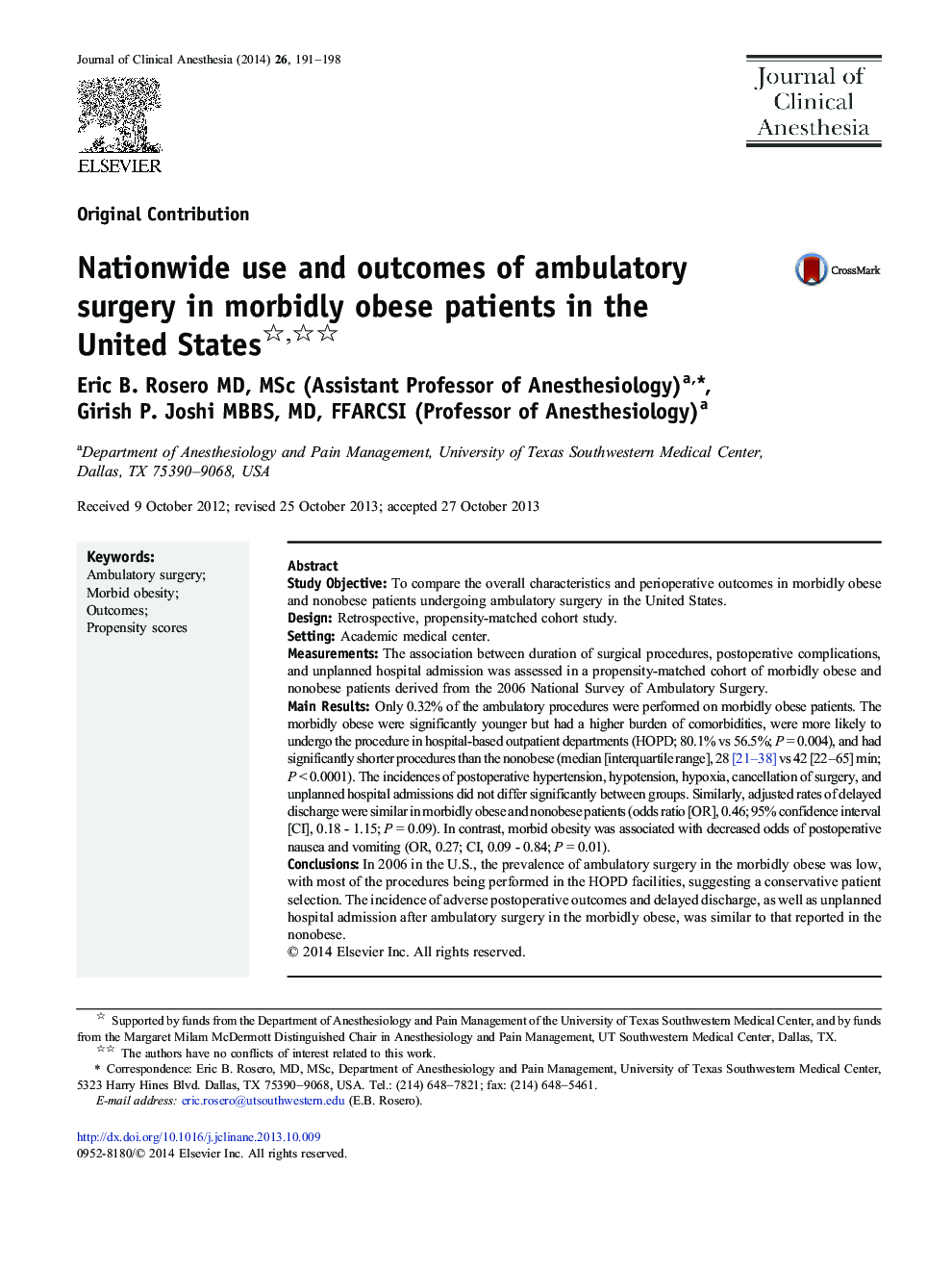| Article ID | Journal | Published Year | Pages | File Type |
|---|---|---|---|---|
| 2762465 | Journal of Clinical Anesthesia | 2014 | 8 Pages |
Study ObjectiveTo compare the overall characteristics and perioperative outcomes in morbidly obese and nonobese patients undergoing ambulatory surgery in the United States.DesignRetrospective, propensity-matched cohort study.SettingAcademic medical center.MeasurementsThe association between duration of surgical procedures, postoperative complications, and unplanned hospital admission was assessed in a propensity-matched cohort of morbidly obese and nonobese patients derived from the 2006 National Survey of Ambulatory Surgery.Main ResultsOnly 0.32% of the ambulatory procedures were performed on morbidly obese patients. The morbidly obese were significantly younger but had a higher burden of comorbidities, were more likely to undergo the procedure in hospital-based outpatient departments (HOPD; 80.1% vs 56.5%; P = 0.004), and had significantly shorter procedures than the nonobese (median [interquartile range], 28 [21], [22], [23], [24], [25], [26], [27], [28], [29], [30], [31], [32], [33], [34], [35], [36], [37] and [38] vs 42 [22–65] min; P < 0.0001). The incidences of postoperative hypertension, hypotension, hypoxia, cancellation of surgery, and unplanned hospital admissions did not differ significantly between groups. Similarly, adjusted rates of delayed discharge were similar in morbidly obese and nonobese patients (odds ratio [OR], 0.46; 95% confidence interval [CI], 0.18 - 1.15; P = 0.09). In contrast, morbid obesity was associated with decreased odds of postoperative nausea and vomiting (OR, 0.27; CI, 0.09 - 0.84; P = 0.01).ConclusionsIn 2006 in the U.S., the prevalence of ambulatory surgery in the morbidly obese was low, with most of the procedures being performed in the HOPD facilities, suggesting a conservative patient selection. The incidence of adverse postoperative outcomes and delayed discharge, as well as unplanned hospital admission after ambulatory surgery in the morbidly obese, was similar to that reported in the nonobese.
